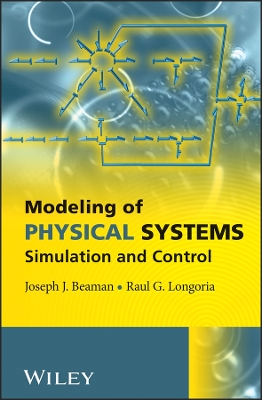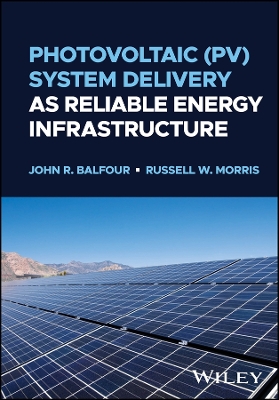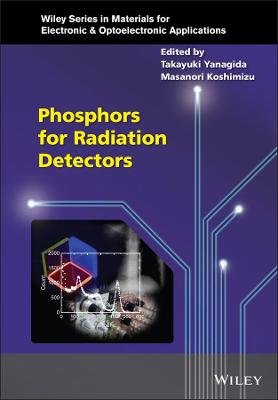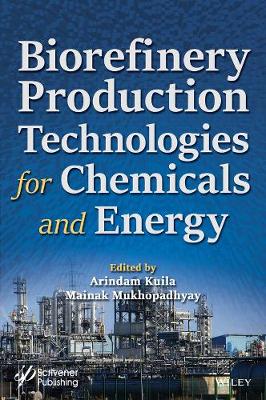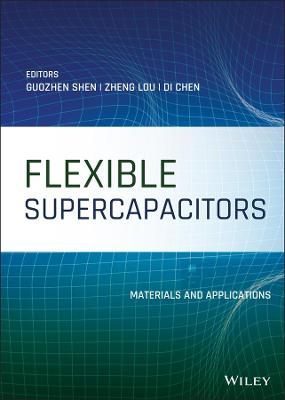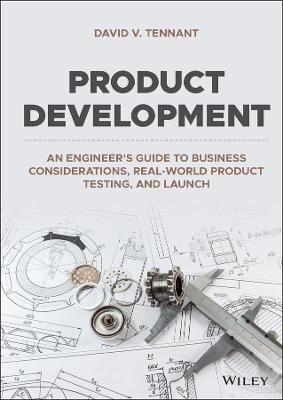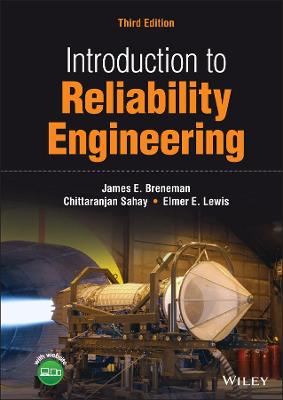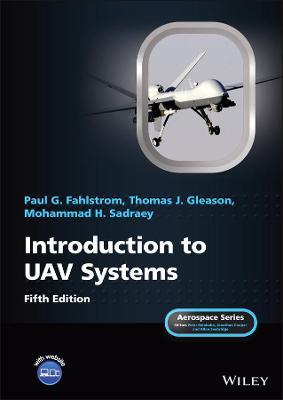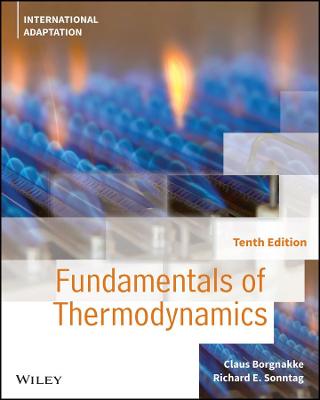Solid-State Sensors
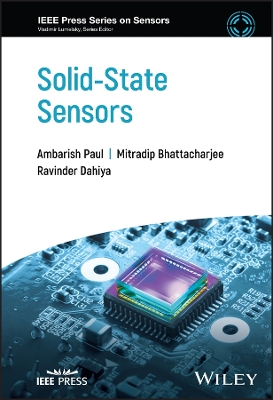 -15%
portes grátis
-15%
portes grátis
Solid-State Sensors
Dahiya, Ravinder; Bhattacharjee, Mitradip; Paul, Ambarish
John Wiley & Sons Inc
10/2023
448
Dura
Inglês
9781119473046
15 a 20 dias
666
Preface xvii
1 Introduction 1
1.1 Overview 1
1.1.1 Growth in Solid-State Sensor Market 2
1.1.2 Solid-State Sensors: A Recipe for Smart Sensing Systems 5
1.2 Evolution of Solid-State Sensors 6
1.2.1 Origin and Early Developments in Detection Devices 6
1.2.2 Solid-State Electronics: Post Transistor Era 9
1.2.3 Emergence of New Technologies 12
1.2.3.1 Thin-Film Technology 14
1.2.3.2 Advancements in Micro- and Nanofabrication 14
1.2.3.3 Emergence of Nanotechnology 16
1.2.3.4 Printed Electronics on Flexible Substrates 17
1.2.3.5 Smart Devices with Artificial Intelligence 20
1.2.3.6 IoT-Enabled Sensors 21
1.2.4 Paradigm Shift in Solid-State Sensor Research 22
1.2.4.1 Organic Devices 23
1.2.4.2 Wearable Devices 24
1.2.4.3 Implantable Sensors 25
1.3 Outline 27
References 28
2 Classification and Terminology 35
2.1 Sensor Components 35
2.2 Classification of Solid-State Sensors 36
2.3 Sensor Terminology 40
2.3.1 Accuracy 40
2.3.2 Precision 41
2.3.3 Calibration Curve 41
2.3.4 Sensitivity 41
2.3.5 Threshold/Minimum Detectable Limit 42
2.3.6 Null Offset 42
2.3.7 Dynamic Range 42
2.3.8 Nonlinearity 42
2.3.9 Hysteresis 43
2.3.10 Selectivity 43
2.3.11 Repeatability 43
2.3.12 Reproducibility 43
2.3.13 Resolution 43
2.3.14 Stability 43
2.3.15 Noise 44
2.3.16 Response and Recovery Time 44
2.3.17 Drift 45
2.4 Conclusion 45
References 45
3 Fabrication Technologies 47
3.1 Introduction 47
3.2 Deposition 48
3.2.1 Physical Vapor Deposition 49
3.2.1.1 Thermal Evaporation 50
3.2.1.2 Sputter Deposition 52
3.2.1.3 Electron-Beam PVD 55
3.2.1.4 Laser Ablation 58
3.2.2 Electroplating 59
3.2.3 Thermal Oxidation 61
3.2.4 Chemical Vapor Deposition 62
3.2.4.1 Atmospheric Pressure Chemical Vapor Deposition 62
3.2.4.2 Low-Pressure Chemical Vapor Deposition 63
3.2.4.3 Plasma-Enhanced Chemical Vapor Deposition 63
3.3 Exposure-Based Lithography Techniques 64
3.3.1 UV Lithography 65
3.3.1.1 Exposure Tool 65
3.3.1.2 Mask 66
3.3.1.3 Photoresist 67
3.3.2 Electron-Beam Lithography 68
3.3.3 X-Ray Lithography 71
3.3.4 Ion-Beam Lithography 71
3.4 Soft Lithography Techniques 72
3.4.1 Particle Replication in Nonwetting Templates 74
3.4.2 Microcontact Printing 75
3.4.3 Microfluidic Patterning 77
3.4.4 Laminar Flow Patterning 79
3.4.5 Step and Flash Imprint Lithography 80
3.4.6 Hydrogel Template 82
3.5 Etching 83
3.5.1 Wet Etching 85
3.5.2 Dry Etching 89
3.6 Doping 90
3.6.1 Diffusion 92
3.6.2 Ion Implantation 94
3.7 Solution Processed Methods 95
3.7.1 Inkjet Printing 95
3.7.2 Drop Dispensing 98
3.7.3 Spray Deposition 100
3.7.4 Screen Printing 101
3.7.5 Tape Casting 103
3.8 Conclusions 105
References 106
4 Piezoelectric Sensors 113
4.1 Overview 113
4.2 Theory of Piezoelectricity 115
4.2.1 Direct Piezoelectric Effect 115
4.2.2 Poling 116
4.2.3 Static Piezoelectricity 118
4.2.4 Anisotropic Crystals 118
4.3 Basic Mathematical Formulation 119
4.3.1 Contribution of Piezoelectric Effect to Elastic constant C 120
4.3.2 Contribution of Piezoelectric Effect to Dielectric Constant ? 121
4.4 Constitutive Equations 122
4.4.1 Piezoelectric 122
4.4.2 Sensor Equations for Electrical Circuits 124
4.4.3 Piezoelectric Constants for a Material 126
4.4.3.1 Piezoelectric Strain Constant d 127
4.4.3.2 Piezoelectric Voltage Coefficient g 127
4.4.3.3 Piezoelectric Coupling Coefficients k 128
4.4.3.4 Mechanical Quality Factor QM 128
4.4.3.5 Acoustic Impedance 129
4.4.3.6 Aging Rate 129
4.4.3.7 Dielectric Constants KTij 129
4.5 Piezoelectric Materials 130
4.5.1 Natural Piezoelectric Materials 131
4.5.1.1 Piezoelectric Single Crystals 131
4.5.1.2 Organic Materials 133
4.5.1.3 Biopiezoelectric Materials 138
4.5.2 Man-made/Synthetic Piezoelectric Material 141
4.5.2.1 Polymers 141
4.5.2.2 Ceramics 143
4.5.2.3 Piezoelectric Composites 146
4.5.2.4 Thin Film 150
4.5.2.5 Choice of Piezoelectric Material for Desired Applications 151
4.6 Uses of Piezoelectric Materials 151
4.6.1 Piezoelectric Transducer 152
4.6.2 Piezoelectric Actuator 153
4.6.3 Piezoelectric Generator 155
4.7 Piezoelectric Transducers as Sensors 157
4.7.1 Pressure Sensor 157
4.7.2 Accelerometer 158
4.7.3 Acoustic Sensor 159
4.8 Design of Piezoelectric Devices 163
4.8.1 Orientation of Piezo Crystals 163
4.8.2 Piezo Stacks 164
4.8.3 Bimorph Architecture 166
4.9 Application of Piezoelectric Sensors 167
4.9.1 Industrial Applications 167
4.9.1.1 Engine Knock Sensors 167
4.9.1.2 Tactile Sensors 168
4.9.1.3 Piezoelectric Motors 169
4.9.1.4 Sonar 171
4.9.2 Consumer Electronics 172
4.9.2.1 Piezoelectric Igniters 172
4.9.2.2 Drop on Demand Piezoelectric Printers 172
4.9.2.3 Speakers 173
4.9.2.4 Other Daily Use Products 173
4.9.3 Medical Applications 174
4.9.3.1 Ultrasound Imaging 174
4.9.3.2 Surgery and Ultrasound Procedures 175
4.9.3.3 Wound and Bone Fracture Healing 175
4.9.4 Defense Applications 176
4.9.4.1 Micro Robotics 176
4.9.4.2 Laser-Guided Bullets and Missiles 178
4.9.5 Musical Applications 179
4.9.5.1 Piezoelectric Pickups for Instruments 179
4.9.5.2 Microphones and Ear Pieces 179
4.9.6 Other Applications 180
4.9.6.1 Energy Harvesters 180
4.9.6.2 Sports-Tennis Racquets 184
4.10 Conclusions 184
References 188
5 Capacitive Sensors 193
5.1 Overview 193
5.1.1 A Capacitor 194
5.1.2 Capacitance of a Capacitor 195
5.2 Sensor Construction 196
5.2.1 Overlapping Electrode Area A 196
5.2.2 Dielectric Thickness d 197
5.2.3 Dielectric Material 199
5.2.4 Parallel Fingers and Fringing Fields 201
5.3 Sensor Architecture 203
5.3.1 Mixed Dielectrics 203
5.3.2 Multielectrode Capacitor 207
5.3.3 Geometry 209
5.4 Classifications of Capacitive Sensors 211
5.4.1 Displacement Capacitive Sensor 211
5.4.2 Overlapping Area Variation Based Capacitive Sensor 213
5.4.3 Effective Dielectric Permittivity Variation Based Capacitive Sensor 214
5.4.4 Fringing Field Capacitive Sensor 218
5.5 Flexible Capacitive Sensors 219
5.6 Applications 221
5.6.1 Motion Detection 221
5.6.1.1 Displacement Motion (z-Direction) 221
5.6.1.2 Shear Motion (x Direction) 221
5.6.1.3 Tilt Sensor 221
5.6.1.4 Rotary Motion Sensor 222
5.6.1.5 Finger Position (2D, x-y Direction) 222
5.6.2 Pressure 222
5.6.3 Liquid Level 223
5.6.4 Spacing 223
5.6.5 Scanned Multiplate Sensor 223
5.6.6 Thickness Measurement 223
5.6.7 Ice Detector 223
5.6.8 Shaft Angle or Linear Position 223
5.6.9 Lamp Dimmer Switch 223
5.6.10 Key Switch 223
5.6.11 Limit Switch 224
5.6.12 Accelerometers 224
5.6.13 Soil Moisture Measurement 224
5.7 Prospects and Limitations 224
5.7.1 Prospects 224
5.7.2 Limitations 224
References 226
6 Chemical Sensors 233
6.1 Introduction 233
6.1.1 Overview 233
6.1.2 Global Limelight 237
6.1.3 Evolution of Chemical Sensors 237
6.1.4 Requirements for Chemical Sensors 240
6.1.4.1 Selectivity 240
6.1.4.2 Stability 240
6.1.4.3 Sensitivity 241
6.1.4.4 Response Time 241
6.1.4.5 Limit of Detection 241
6.2 Materials for Chemical Sensing 241
6.2.1 Metal Oxides 241
6.2.1.1 Types of Metal Oxides 242
6.2.1.2 Chemical Sensing Mechanism 243
6.2.1.3 Metal Oxide Nanoparticles and Films as Sensor Materials 244
6.2.2 Honeycomb Structured Materials 245
6.2.2.1 Graphene 246
6.2.2.2 Carbon Nanotubes 248
6.2.2.3 Other 2D Materials 250
6.2.3 Biopolymers 251
6.2.3.1 On the Basis of Type 252
6.2.3.2 On the Basis of Origin 255
6.2.3.3 On the Basis of Monomeric Units 261
6.2.4 Functionalization 265
6.2.4.1 Covalent Functionalization 266
6.2.4.2 Noncovalent Functionalization 268
6.2.5 Biocomposites 270
6.3 Architectures in Chemical Sensors 272
6.3.1 Chemiresistors 272
6.3.2 ChemFET 275
6.4 Applications 277
6.4.1 Gas Sensors 277
6.4.2 Environmental Sensors 278
6.4.2.1 Pollutants/Aerosols Sensors 279
6.4.2.2 Water Quality Monitoring Sensors 281
6.4.2.3 Humidity Detectors 282
6.4.2.4 UV Radiation Exposure Monitoring 283
6.4.3 Biomolecule Sensors 284
6.4.4 Food Quality Monitoring 284
6.4.4.1 Relative Humidity Monitoring 284
6.4.4.2 Gas Monitoring 285
6.4.4.3 Temperature Monitoring 285
6.4.4.4 Presence of Toxic Metals 286
6.4.5 Water Quality Management in Public Pools 286
6.4.6 Health Monitoring 287
6.4.7 Defense and Security 288
6.5 Conclusions 290
References 293
7 Optical Sensors 309
7.1 Introduction 309
7.2 Classifications of Optical Properties 311
7.2.1 Absorbance 311
7.2.2 Reflectance 312
7.2.3 Light Scattering 312
7.2.4 Luminescence 314
7.2.5 Fluorescence 314
7.2.6 Circular Dichroism 315
7.2.7 Z-Scan Technique 317
7.2.8 Foerster Resonance Energy Transfer 317
7.3 Materials for Optical Sensing 319
7.3.1 Metal Oxide Materials 319
7.3.2 Polymer Materials 319
7.3.3 Carbon Materials 320
7.4 Optical Techniques for Sensing 320
7.4.1 SPR-Based Detection 321
7.4.2 Nanostructure Aggregation-Mediated Detection 323
7.4.3 Micro/Nanofiber-Based Detection 323
7.4.4 Colorimetric Sensing 324
7.4.5 Spectroscopy Techniques Associated with Sensing 325
7.4.5.1 Raman Spectroscopy 326
7.4.5.2 Luminescence Spectroscopy 326
7.4.5.3 Absorption Spectroscopy 326
7.5 Fabrication Technique of Optical Sensors 327
7.5.1 Solution Process 327
7.5.2 Inkjet Printing 328
7.5.3 Screen Printing 328
7.6 Applications of Optical Sensing 328
7.6.1 Environment Monitoring and Gas Sensing 328
7.6.2 Health Monitoring 332
7.6.3 Fingerprint Detection 332
7.6.4 Defense and Security 333
7.6.5 Motion Detection 334
7.6.6 Water Quality Monitoring 334
7.6.7 e-Waste and Detection of Toxic Materials 335
7.6.8 Detection of Microorganisms 337
7.7 Prospects and Limitations 337
References 339
8 Magnetic Sensors 341
8.1 Introduction 341
8.2 Materials' Magnetic Properties 342
8.2.1 Diamagnetism 343
8.2.2 Paramagnetism 343
8.2.3 Ferromagnetism and Antiferromagnetism 344
8.3 Nanomagnetism 347
8.3.1 Magnetic Anisotropy 347
8.3.2 Interlayer Exchange Coupling 347
8.3.3 Exchange Bias 347
8.3.4 Spin-Polarized Transport 347
8.4 Magnetic Sensing Techniques 349
8.4.1 Hall Effect Sensors 349
8.4.2 Magnetoresistive Sensors 354
8.4.2.1 Ordinary Magnetoresistance 354
8.4.2.2 Anisotropic Magnetoresistance 356
8.4.2.3 Giant Magnetoresistance 357
8.4.2.4 Tunnel Magnetoresistance 358
8.4.2.5 Colossal Magnetoresistance 360
8.5 Fabrication and Characterization Technologies 360
8.5.1 Conventional Fabrication 361
8.5.2 Solution Process 361
8.5.3 Printing Technologies 361
8.6 Magnetic Sensor Applications 361
8.6.1 Biosensors 361
8.6.2 Magnetic Storage and Read Heads 362
8.6.3 Current Sensing 362
8.6.4 Position and Angle Sensors 364
8.7 Prospects and Limitations 365
References 365
9 Interface Circuits 369
9.1 Introduction 369
9.1.1 Functions of Interface 369
9.1.2 Types of Sensor Interfacing Circuits 370
9.1.3 Battery 372
9.1.4 Battery Characteristics in System Analysis 373
9.1.5 Applications of an I/O Interface Device 376
9.1.6 Importance of Input Impedance 377
9.2 Amplifier Circuits 378
9.2.1 Ideal Operational Amplifier (Op-amp) 378
9.2.2 Inverting and Noninverting Op-amps 379
9.2.3 Voltage Follower 380
9.2.4 Instrumentation Amplifier 381
9.2.5 Charge Amplifiers 382
9.2.6 Applications of Amplifiers 382
9.3 Excitation Circuits 383
9.3.1 Current Generators 383
9.3.2 Voltage Reference 383
9.3.3 Oscillators 385
9.3.4 Drivers 386
9.4 Analog-to-Digital Converters 386
9.4.1 Basic Concepts of ADC 386
9.4.2 V/F Converter 387
9.4.3 Dual-Slope Converter 389
9.4.4 Successive Approximation Converter 390
9.4.5 Resolution Extension 391
9.5 Noise in Sensors and Circuits 391
9.5.1 Inherent Noise 392
9.5.2 Electric Shielding 393
9.5.3 Bypass Capacitor 394
9.5.4 Magnetic Shielding 394
9.5.5 Ground Planes 395
9.5.6 Ground Loops and Ground Isolation 396
9.6 Batteries for Low-Power Sensors and Wireless Systems 398
9.6.1 Primary Cells 400
9.6.2 Secondary Cells 401
9.6.3 Energy Harvesting for WSN 401
References 403
Index 409
Preface xvii
1 Introduction 1
1.1 Overview 1
1.1.1 Growth in Solid-State Sensor Market 2
1.1.2 Solid-State Sensors: A Recipe for Smart Sensing Systems 5
1.2 Evolution of Solid-State Sensors 6
1.2.1 Origin and Early Developments in Detection Devices 6
1.2.2 Solid-State Electronics: Post Transistor Era 9
1.2.3 Emergence of New Technologies 12
1.2.3.1 Thin-Film Technology 14
1.2.3.2 Advancements in Micro- and Nanofabrication 14
1.2.3.3 Emergence of Nanotechnology 16
1.2.3.4 Printed Electronics on Flexible Substrates 17
1.2.3.5 Smart Devices with Artificial Intelligence 20
1.2.3.6 IoT-Enabled Sensors 21
1.2.4 Paradigm Shift in Solid-State Sensor Research 22
1.2.4.1 Organic Devices 23
1.2.4.2 Wearable Devices 24
1.2.4.3 Implantable Sensors 25
1.3 Outline 27
References 28
2 Classification and Terminology 35
2.1 Sensor Components 35
2.2 Classification of Solid-State Sensors 36
2.3 Sensor Terminology 40
2.3.1 Accuracy 40
2.3.2 Precision 41
2.3.3 Calibration Curve 41
2.3.4 Sensitivity 41
2.3.5 Threshold/Minimum Detectable Limit 42
2.3.6 Null Offset 42
2.3.7 Dynamic Range 42
2.3.8 Nonlinearity 42
2.3.9 Hysteresis 43
2.3.10 Selectivity 43
2.3.11 Repeatability 43
2.3.12 Reproducibility 43
2.3.13 Resolution 43
2.3.14 Stability 43
2.3.15 Noise 44
2.3.16 Response and Recovery Time 44
2.3.17 Drift 45
2.4 Conclusion 45
References 45
3 Fabrication Technologies 47
3.1 Introduction 47
3.2 Deposition 48
3.2.1 Physical Vapor Deposition 49
3.2.1.1 Thermal Evaporation 50
3.2.1.2 Sputter Deposition 52
3.2.1.3 Electron-Beam PVD 55
3.2.1.4 Laser Ablation 58
3.2.2 Electroplating 59
3.2.3 Thermal Oxidation 61
3.2.4 Chemical Vapor Deposition 62
3.2.4.1 Atmospheric Pressure Chemical Vapor Deposition 62
3.2.4.2 Low-Pressure Chemical Vapor Deposition 63
3.2.4.3 Plasma-Enhanced Chemical Vapor Deposition 63
3.3 Exposure-Based Lithography Techniques 64
3.3.1 UV Lithography 65
3.3.1.1 Exposure Tool 65
3.3.1.2 Mask 66
3.3.1.3 Photoresist 67
3.3.2 Electron-Beam Lithography 68
3.3.3 X-Ray Lithography 71
3.3.4 Ion-Beam Lithography 71
3.4 Soft Lithography Techniques 72
3.4.1 Particle Replication in Nonwetting Templates 74
3.4.2 Microcontact Printing 75
3.4.3 Microfluidic Patterning 77
3.4.4 Laminar Flow Patterning 79
3.4.5 Step and Flash Imprint Lithography 80
3.4.6 Hydrogel Template 82
3.5 Etching 83
3.5.1 Wet Etching 85
3.5.2 Dry Etching 89
3.6 Doping 90
3.6.1 Diffusion 92
3.6.2 Ion Implantation 94
3.7 Solution Processed Methods 95
3.7.1 Inkjet Printing 95
3.7.2 Drop Dispensing 98
3.7.3 Spray Deposition 100
3.7.4 Screen Printing 101
3.7.5 Tape Casting 103
3.8 Conclusions 105
References 106
4 Piezoelectric Sensors 113
4.1 Overview 113
4.2 Theory of Piezoelectricity 115
4.2.1 Direct Piezoelectric Effect 115
4.2.2 Poling 116
4.2.3 Static Piezoelectricity 118
4.2.4 Anisotropic Crystals 118
4.3 Basic Mathematical Formulation 119
4.3.1 Contribution of Piezoelectric Effect to Elastic constant C 120
4.3.2 Contribution of Piezoelectric Effect to Dielectric Constant ? 121
4.4 Constitutive Equations 122
4.4.1 Piezoelectric 122
4.4.2 Sensor Equations for Electrical Circuits 124
4.4.3 Piezoelectric Constants for a Material 126
4.4.3.1 Piezoelectric Strain Constant d 127
4.4.3.2 Piezoelectric Voltage Coefficient g 127
4.4.3.3 Piezoelectric Coupling Coefficients k 128
4.4.3.4 Mechanical Quality Factor QM 128
4.4.3.5 Acoustic Impedance 129
4.4.3.6 Aging Rate 129
4.4.3.7 Dielectric Constants KTij 129
4.5 Piezoelectric Materials 130
4.5.1 Natural Piezoelectric Materials 131
4.5.1.1 Piezoelectric Single Crystals 131
4.5.1.2 Organic Materials 133
4.5.1.3 Biopiezoelectric Materials 138
4.5.2 Man-made/Synthetic Piezoelectric Material 141
4.5.2.1 Polymers 141
4.5.2.2 Ceramics 143
4.5.2.3 Piezoelectric Composites 146
4.5.2.4 Thin Film 150
4.5.2.5 Choice of Piezoelectric Material for Desired Applications 151
4.6 Uses of Piezoelectric Materials 151
4.6.1 Piezoelectric Transducer 152
4.6.2 Piezoelectric Actuator 153
4.6.3 Piezoelectric Generator 155
4.7 Piezoelectric Transducers as Sensors 157
4.7.1 Pressure Sensor 157
4.7.2 Accelerometer 158
4.7.3 Acoustic Sensor 159
4.8 Design of Piezoelectric Devices 163
4.8.1 Orientation of Piezo Crystals 163
4.8.2 Piezo Stacks 164
4.8.3 Bimorph Architecture 166
4.9 Application of Piezoelectric Sensors 167
4.9.1 Industrial Applications 167
4.9.1.1 Engine Knock Sensors 167
4.9.1.2 Tactile Sensors 168
4.9.1.3 Piezoelectric Motors 169
4.9.1.4 Sonar 171
4.9.2 Consumer Electronics 172
4.9.2.1 Piezoelectric Igniters 172
4.9.2.2 Drop on Demand Piezoelectric Printers 172
4.9.2.3 Speakers 173
4.9.2.4 Other Daily Use Products 173
4.9.3 Medical Applications 174
4.9.3.1 Ultrasound Imaging 174
4.9.3.2 Surgery and Ultrasound Procedures 175
4.9.3.3 Wound and Bone Fracture Healing 175
4.9.4 Defense Applications 176
4.9.4.1 Micro Robotics 176
4.9.4.2 Laser-Guided Bullets and Missiles 178
4.9.5 Musical Applications 179
4.9.5.1 Piezoelectric Pickups for Instruments 179
4.9.5.2 Microphones and Ear Pieces 179
4.9.6 Other Applications 180
4.9.6.1 Energy Harvesters 180
4.9.6.2 Sports-Tennis Racquets 184
4.10 Conclusions 184
References 188
5 Capacitive Sensors 193
5.1 Overview 193
5.1.1 A Capacitor 194
5.1.2 Capacitance of a Capacitor 195
5.2 Sensor Construction 196
5.2.1 Overlapping Electrode Area A 196
5.2.2 Dielectric Thickness d 197
5.2.3 Dielectric Material 199
5.2.4 Parallel Fingers and Fringing Fields 201
5.3 Sensor Architecture 203
5.3.1 Mixed Dielectrics 203
5.3.2 Multielectrode Capacitor 207
5.3.3 Geometry 209
5.4 Classifications of Capacitive Sensors 211
5.4.1 Displacement Capacitive Sensor 211
5.4.2 Overlapping Area Variation Based Capacitive Sensor 213
5.4.3 Effective Dielectric Permittivity Variation Based Capacitive Sensor 214
5.4.4 Fringing Field Capacitive Sensor 218
5.5 Flexible Capacitive Sensors 219
5.6 Applications 221
5.6.1 Motion Detection 221
5.6.1.1 Displacement Motion (z-Direction) 221
5.6.1.2 Shear Motion (x Direction) 221
5.6.1.3 Tilt Sensor 221
5.6.1.4 Rotary Motion Sensor 222
5.6.1.5 Finger Position (2D, x-y Direction) 222
5.6.2 Pressure 222
5.6.3 Liquid Level 223
5.6.4 Spacing 223
5.6.5 Scanned Multiplate Sensor 223
5.6.6 Thickness Measurement 223
5.6.7 Ice Detector 223
5.6.8 Shaft Angle or Linear Position 223
5.6.9 Lamp Dimmer Switch 223
5.6.10 Key Switch 223
5.6.11 Limit Switch 224
5.6.12 Accelerometers 224
5.6.13 Soil Moisture Measurement 224
5.7 Prospects and Limitations 224
5.7.1 Prospects 224
5.7.2 Limitations 224
References 226
6 Chemical Sensors 233
6.1 Introduction 233
6.1.1 Overview 233
6.1.2 Global Limelight 237
6.1.3 Evolution of Chemical Sensors 237
6.1.4 Requirements for Chemical Sensors 240
6.1.4.1 Selectivity 240
6.1.4.2 Stability 240
6.1.4.3 Sensitivity 241
6.1.4.4 Response Time 241
6.1.4.5 Limit of Detection 241
6.2 Materials for Chemical Sensing 241
6.2.1 Metal Oxides 241
6.2.1.1 Types of Metal Oxides 242
6.2.1.2 Chemical Sensing Mechanism 243
6.2.1.3 Metal Oxide Nanoparticles and Films as Sensor Materials 244
6.2.2 Honeycomb Structured Materials 245
6.2.2.1 Graphene 246
6.2.2.2 Carbon Nanotubes 248
6.2.2.3 Other 2D Materials 250
6.2.3 Biopolymers 251
6.2.3.1 On the Basis of Type 252
6.2.3.2 On the Basis of Origin 255
6.2.3.3 On the Basis of Monomeric Units 261
6.2.4 Functionalization 265
6.2.4.1 Covalent Functionalization 266
6.2.4.2 Noncovalent Functionalization 268
6.2.5 Biocomposites 270
6.3 Architectures in Chemical Sensors 272
6.3.1 Chemiresistors 272
6.3.2 ChemFET 275
6.4 Applications 277
6.4.1 Gas Sensors 277
6.4.2 Environmental Sensors 278
6.4.2.1 Pollutants/Aerosols Sensors 279
6.4.2.2 Water Quality Monitoring Sensors 281
6.4.2.3 Humidity Detectors 282
6.4.2.4 UV Radiation Exposure Monitoring 283
6.4.3 Biomolecule Sensors 284
6.4.4 Food Quality Monitoring 284
6.4.4.1 Relative Humidity Monitoring 284
6.4.4.2 Gas Monitoring 285
6.4.4.3 Temperature Monitoring 285
6.4.4.4 Presence of Toxic Metals 286
6.4.5 Water Quality Management in Public Pools 286
6.4.6 Health Monitoring 287
6.4.7 Defense and Security 288
6.5 Conclusions 290
References 293
7 Optical Sensors 309
7.1 Introduction 309
7.2 Classifications of Optical Properties 311
7.2.1 Absorbance 311
7.2.2 Reflectance 312
7.2.3 Light Scattering 312
7.2.4 Luminescence 314
7.2.5 Fluorescence 314
7.2.6 Circular Dichroism 315
7.2.7 Z-Scan Technique 317
7.2.8 Foerster Resonance Energy Transfer 317
7.3 Materials for Optical Sensing 319
7.3.1 Metal Oxide Materials 319
7.3.2 Polymer Materials 319
7.3.3 Carbon Materials 320
7.4 Optical Techniques for Sensing 320
7.4.1 SPR-Based Detection 321
7.4.2 Nanostructure Aggregation-Mediated Detection 323
7.4.3 Micro/Nanofiber-Based Detection 323
7.4.4 Colorimetric Sensing 324
7.4.5 Spectroscopy Techniques Associated with Sensing 325
7.4.5.1 Raman Spectroscopy 326
7.4.5.2 Luminescence Spectroscopy 326
7.4.5.3 Absorption Spectroscopy 326
7.5 Fabrication Technique of Optical Sensors 327
7.5.1 Solution Process 327
7.5.2 Inkjet Printing 328
7.5.3 Screen Printing 328
7.6 Applications of Optical Sensing 328
7.6.1 Environment Monitoring and Gas Sensing 328
7.6.2 Health Monitoring 332
7.6.3 Fingerprint Detection 332
7.6.4 Defense and Security 333
7.6.5 Motion Detection 334
7.6.6 Water Quality Monitoring 334
7.6.7 e-Waste and Detection of Toxic Materials 335
7.6.8 Detection of Microorganisms 337
7.7 Prospects and Limitations 337
References 339
8 Magnetic Sensors 341
8.1 Introduction 341
8.2 Materials' Magnetic Properties 342
8.2.1 Diamagnetism 343
8.2.2 Paramagnetism 343
8.2.3 Ferromagnetism and Antiferromagnetism 344
8.3 Nanomagnetism 347
8.3.1 Magnetic Anisotropy 347
8.3.2 Interlayer Exchange Coupling 347
8.3.3 Exchange Bias 347
8.3.4 Spin-Polarized Transport 347
8.4 Magnetic Sensing Techniques 349
8.4.1 Hall Effect Sensors 349
8.4.2 Magnetoresistive Sensors 354
8.4.2.1 Ordinary Magnetoresistance 354
8.4.2.2 Anisotropic Magnetoresistance 356
8.4.2.3 Giant Magnetoresistance 357
8.4.2.4 Tunnel Magnetoresistance 358
8.4.2.5 Colossal Magnetoresistance 360
8.5 Fabrication and Characterization Technologies 360
8.5.1 Conventional Fabrication 361
8.5.2 Solution Process 361
8.5.3 Printing Technologies 361
8.6 Magnetic Sensor Applications 361
8.6.1 Biosensors 361
8.6.2 Magnetic Storage and Read Heads 362
8.6.3 Current Sensing 362
8.6.4 Position and Angle Sensors 364
8.7 Prospects and Limitations 365
References 365
9 Interface Circuits 369
9.1 Introduction 369
9.1.1 Functions of Interface 369
9.1.2 Types of Sensor Interfacing Circuits 370
9.1.3 Battery 372
9.1.4 Battery Characteristics in System Analysis 373
9.1.5 Applications of an I/O Interface Device 376
9.1.6 Importance of Input Impedance 377
9.2 Amplifier Circuits 378
9.2.1 Ideal Operational Amplifier (Op-amp) 378
9.2.2 Inverting and Noninverting Op-amps 379
9.2.3 Voltage Follower 380
9.2.4 Instrumentation Amplifier 381
9.2.5 Charge Amplifiers 382
9.2.6 Applications of Amplifiers 382
9.3 Excitation Circuits 383
9.3.1 Current Generators 383
9.3.2 Voltage Reference 383
9.3.3 Oscillators 385
9.3.4 Drivers 386
9.4 Analog-to-Digital Converters 386
9.4.1 Basic Concepts of ADC 386
9.4.2 V/F Converter 387
9.4.3 Dual-Slope Converter 389
9.4.4 Successive Approximation Converter 390
9.4.5 Resolution Extension 391
9.5 Noise in Sensors and Circuits 391
9.5.1 Inherent Noise 392
9.5.2 Electric Shielding 393
9.5.3 Bypass Capacitor 394
9.5.4 Magnetic Shielding 394
9.5.5 Ground Planes 395
9.5.6 Ground Loops and Ground Isolation 396
9.6 Batteries for Low-Power Sensors and Wireless Systems 398
9.6.1 Primary Cells 400
9.6.2 Secondary Cells 401
9.6.3 Energy Harvesting for WSN 401
References 403
Index 409

